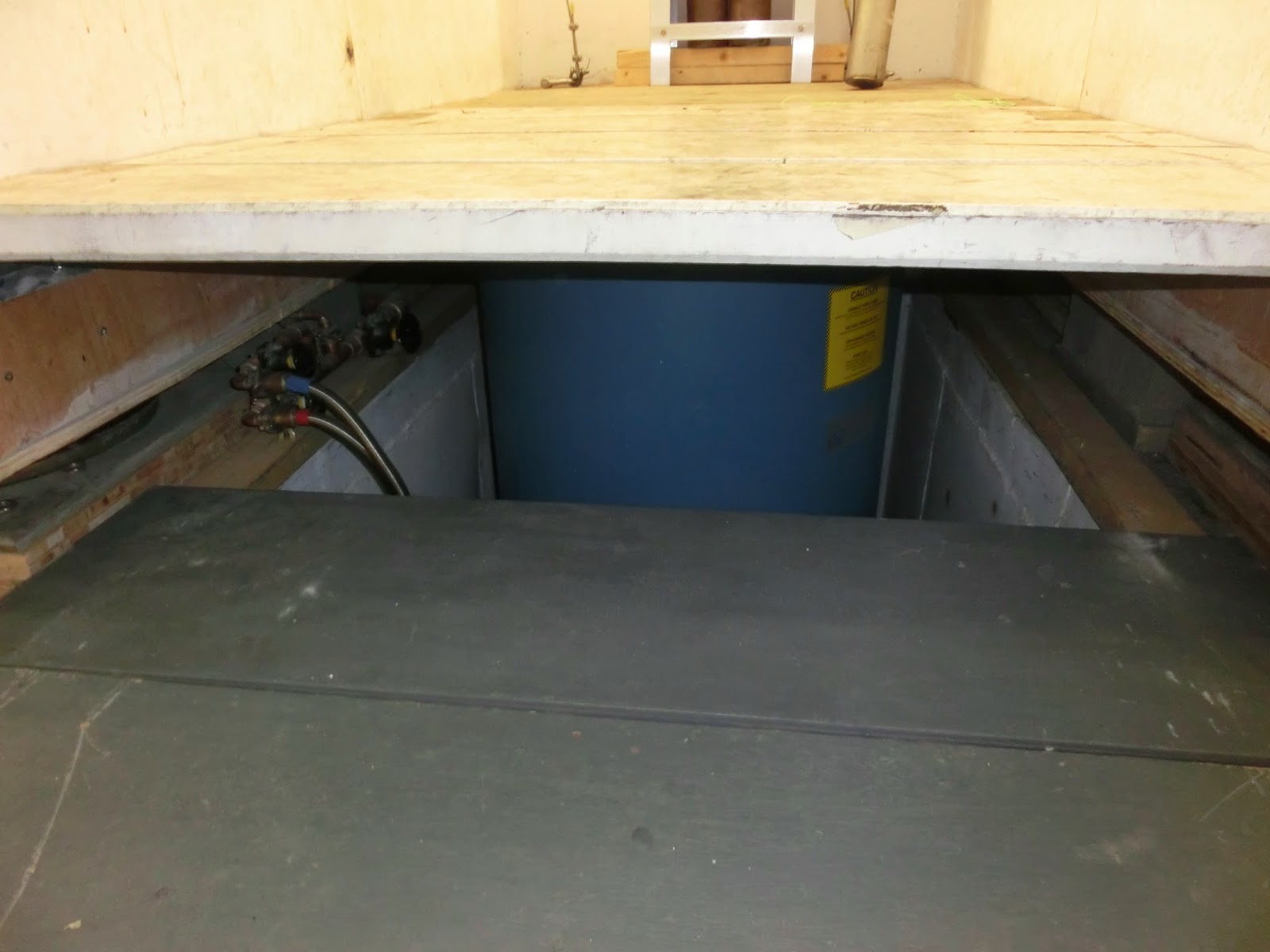We drove past Lancaster University on the M6. The Physics labs are behind the trees on the left and perhaps 100m from the motorway at the closest point. All this traffic causes problems.
Remember the wobble cube:
The temperature is a measure of the kinetic energy of the vibrating particles. There are two ways to make them vibrate more: add thermal energy or hit them. Technically the latter is called "doing work". This is a very rough statement of the First Law of Thermodynamics: you can raise the temperature of something if you hit it or heat it. All that traffic on the motorway is wobbling the environment and rattling the particles in the coldest fridge in the world. This would raise the temperature of the contents. The solution is to have the whole fridge floating on an air suspension. You really can push the huge concrete structure with one hand! Here's the view underneathAlso the windows and walls are lined with metal to repel unwanted electromagnetic waves like radio waves or mobile signals, because these also have energy that they can give to the particles to make them wobble more. In the coldest place in the Universe, there should be no wobble.

















































